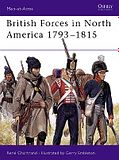
Gorman helping in his own inimitable way. We discovered that we were short a few impassable hills just after laying out the field, so I rambled outside with some foam, quickly did the business and we were back in action within munutes, the scent of spray paint assailing our nostrils.

General Du Gormand glass of Argintinean plonk close to hand surveys the battlefield.
For those of you unfamiliar with the battle of Rolica, I shall summarise. Both Spain and Portugal had risen against the French invader and he was having a hot time of it. The British had landed in Portugal at a spot called Mondego Bay. They were led by Wellington or plain old Wellesley as he was at the time and began to march on Lisbon, pursuing a French force under Delaborde.
Wellesley was very keen to get weaving because he was due to be replaced by more senior officers being sent from England. Delaborde took up a strong position by the village of Rolica and was booted off it on the morning of the 17th of August. He fell back in good order and took up a second position, again on a ridge line, but one that could only be approached by several steep ravines.
So there you have it; an almost complete reversal of the traditional Peninsular battle. The outnumbered French sitting on a hill while the British come for them with the bayonet.



One of the ravines, the British infantry have to advance on a narrow frontage towards the enemy position. The hills marked with stones are impassable.

The view from the French lines. Gorman held is cavalry reserve back until late in the battle and punished my Portuguese troops with them. Note the use of foam offcuts to mark impassable hills. I must come up with a more elegant solution.

The advance continues. The French ration their cards while I spend mine trying to advance of a broad front. Getting the guns forward proves almost impossible.

Cat stops play.
Sissi surveys the advancing redcoats. Despite her Austrian background, I can't help but thing she is rooting for the French.

Sissi lines up a shot. Traditionally French general acoutre their female "ADC"s in hussar uniforms. General Du Gormand falls down on the job again.

You there! Dress that line!

Sergeant, take that man's name!

And that's quite enough of that.

As my forces inch forward, Du Gorman continues to pummel me with gunfire chipping away at my infantry.

The guns in question. The British infantry start to close on the French position, bloodied, but unbowed. The French infantry are still fresh though.

Finally, the redcoats close the distance after a great deal of punishment. But will they have sufficient strength to take the position?
Even as I ponder this the French left begins their counter-attack.

Musketry crashes up and down the line. Some Frenchmen fall and the issue hangs in the balance.

With the infantry fight in the centre still in doubt, the French cavalry begins to move forward ready to take the centre column in the flank before the troops on the right can come up.

Frenchmen are falling fast in the centre, but will it be enough?

As the
Kings Royal Halberdiers arrive at the mouth of the ravine, they are greeted by the sight of bodies everywhere.

The counter-attack develops completely now, the French line smashing the heads of the British columns.

And it's all over., With the centre column destroyed, the French advance to contest the mouths of both ravines and their cavalry (off camera) pick off a Portuguese regiment to take the game 6-5. Close, but no cigar.
This was a good game and the second of two Rolica scenarios we played. General Du Gormand (his choice of female companion not withstanding) was a canny opponent, who played his hand well and made careful use of his artillery to weaken units for infantry counterattacks. His use of the cavalry at the end of the battle was devastating.
In retrospect, I think I tried to advance on too broad a front and I should have been willing to endure a certain amount of waiting to get my guns up. I relied too much on Gough style Tipperary tactics.
Revanche!


















































































